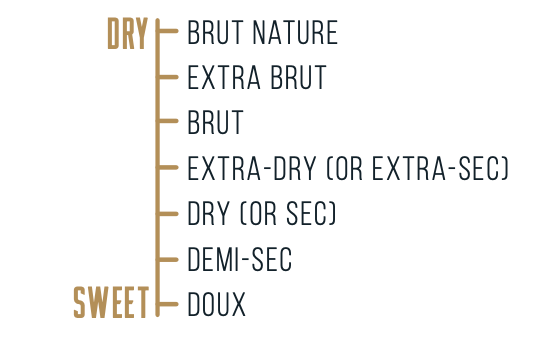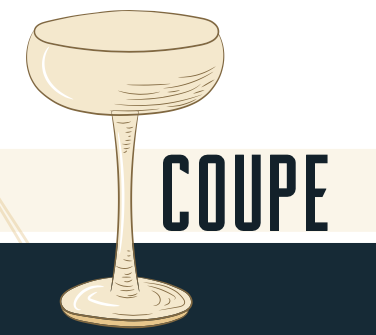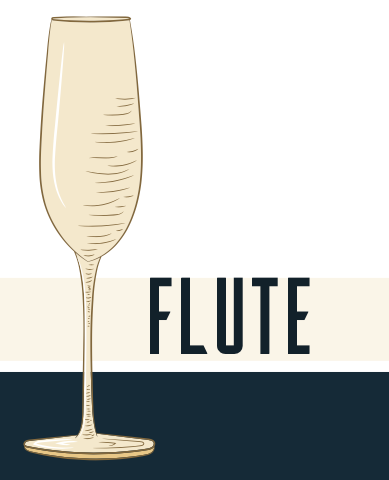Champagne derives its name, not from the specific grape that it is made from, but the area of France that it is derived from. According to the website bespokeunit.com, “The sparkling wine carries the name of a local geographic region, la Champagne, which is 100 km (62 miles) east of Paris, France. However, the official wine-growing borders sprawl far beyond these regional boundaries covering a 35,000 hectare (84,000 acres) landmass. This is strictly defined by what is called an Appellation, a highly protective officially controlled designation of origin. This means that in order to be called Champagne, the sparkling wine has to follow specific production and geographical regulations.” If you want to learn more about this fancy drink, look below for Champagne 101!
The different kinds of champagne:
Champagnes range from sweet to dry to the taste based on how much sugar is added before the corking process.
So, how’s it made?
Champagne is typically made from three types of grapes that are grown in the la Champagne region due to its climate and soil. The three types include Chardonnay (white), Pinot Noir (red) and Pinot Meunier (red). When blended together, they produce a flavorful Champagne treat.
Why does champagne give me a headache?
According to winefolly.com, there are three main reasons why we seem to get a headache more often when drinking Champagne than other cocktails:
1. You don’t feel thirsty! Carbonation makes you forget you’re thirsty.
2. You drink more! It’s easy to drink a whole bottle of Champagne because of its quaffable style.
3. You drink later! Sparkling wine goes along with late-night entertainment such as New Year’s parties.
So, how to avoid a Champagne headache? Drink lots of water, pace yourself and drink responsibly!
But which glasses?
These vintage glasses became popular in the early 20th century and are said to be modeled after Marie Antoinette’s breast. The coupe glass has a wide rim which allows the Champagne to breathe, have more interaction with oxygen and enhance in flavor over time.
Designed to be a cross between a flute glass and coupe, the tulip Champagne glass allows for the bubbles to rise perfectly and release all the aromas that make Champagne so flavorful.
Today, the flute Champagne glass is the most popular stemware to use when drinking Champagne. It is a tall narrow glass with a point at the bottom of the glass that allows for the bubbles to collect then rise to the top. This allows for a savory taste and a beautiful presentation.
Illustrations by Grace Downey
*Drink responsibly. Over 21 only please.
Related articles
7 Healthier New Year’s Resolutions
5 Drinks For Holiday Happy Hour
How To Make Your Home A Happier Place





